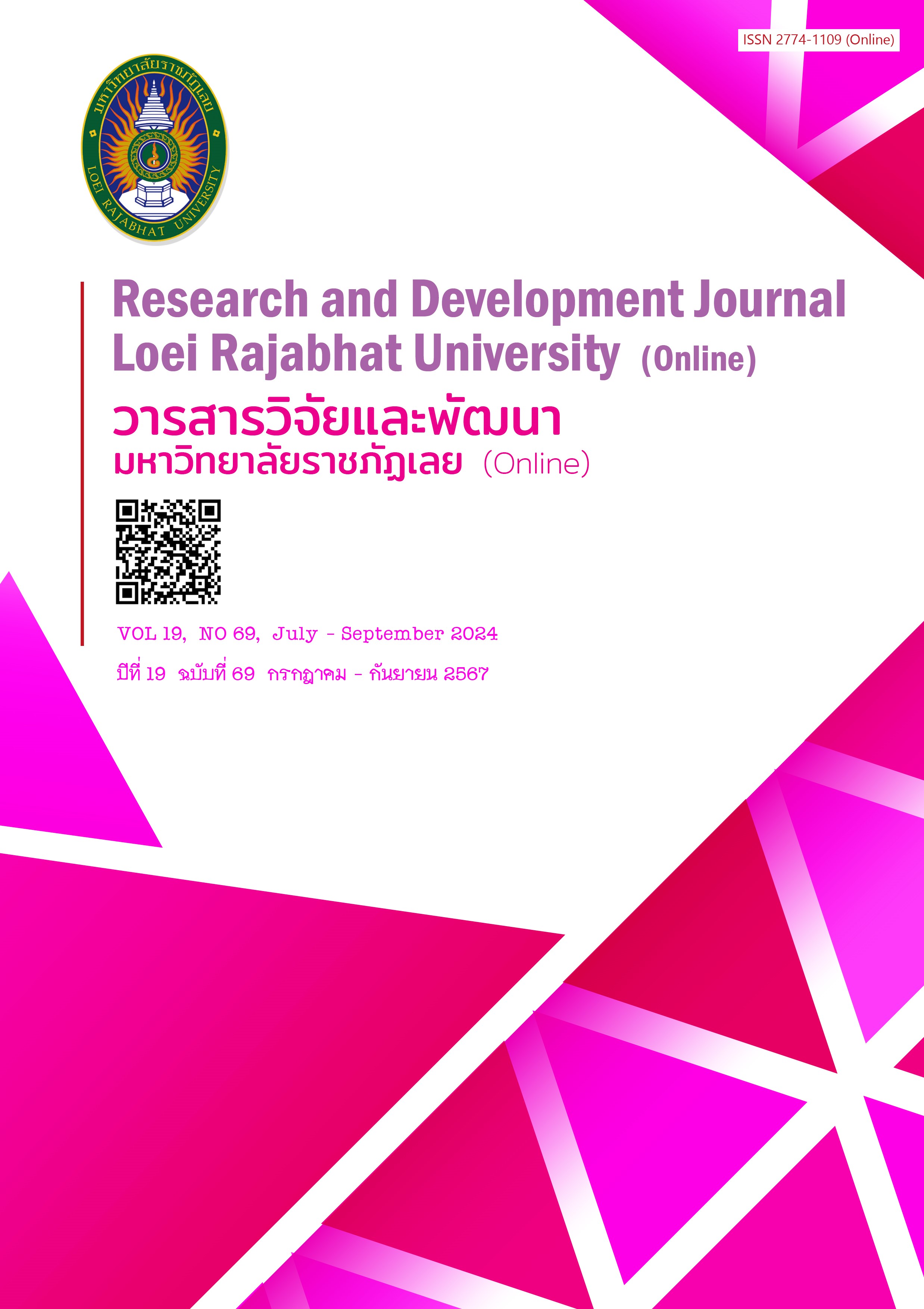แนวทางในการพัฒนานักบริหารทรัพยากรมนุษย์สู่ตลาดแรงงานในจังหวัดเชียงใหม่
คำสำคัญ:
การพัฒนาทรัพยากรมนุษย์, นักบริหารทรัพยากรมนุษย์, สมรรถนะบทคัดย่อ
งานวิจัยฉบับนี้มีวัตถุประสงค์เพื่อ 1) ศึกษาความคิดเห็นเกี่ยวกับสมรรถนะที่จำเป็นสำหรับนักบริหารทรัพยากรมนุษย์ในจังหวัดเชียงใหม่ 2) ศึกษาความต้องการ และความคิดเห็นเกี่ยวกับแนวทางในการพัฒนานักบริหารทรัพยากรมนุษย์ในจังหวัดเชียงใหม่ และ 3) เสนอแนวทางการพัฒนานักบริหารทรัพยากรมนุษย์ในจังหวัดเชียงใหม่ เป็นการวิจัยเชิงคุณภาพ รวบรวมข้อมูลจากการวิเคราะห์เอกสารมาตรฐานอาชีพ สาขาวิชาชีพบริหารงานบุคคล การสัมภาษณ์นักบริหารทรัพยากรมนุษย์ที่ปฏิบัติงานในสถานประกอบการเอกชน พื้นที่จังหวัดเชียงใหม่ จำนวน 12 คน และการสัมภาษณ์นักศึกษาชั้นปีที่ 4 หลักสูตรบริหารธุรกิจบัณฑิต สาขาวิชาการบริหารทรัพยากรมนุษย์ ซึ่งกำลังพัฒนาตนเองสู่ตำแหน่งงานด้านการบริหารทรัพยากรมนุษย์ จำนวน 10 คน ใช้วิธีการวิเคราะห์เนื้อหาในการวิเคราะห์ข้อมูล
ผลการศึกษาตามวัตถุประสงค์พบว่า 1) นักบริหารทรัพยากรมนุษย์ ระดับปฏิบัติการ ที่จะเข้าสู่ตลาดแรงงาน จังหวัดเชียงใหม่ ควรมีสมรรถนะหลักที่จำเป็น 7 สมรรถนะ ได้แก่ มีจรรยาบรรณในการปฏิบัติงานวิชาชีพ คิดวิเคราะห์ และประมวลผลความยืดหยุ่น และความสามารถในการปรับตัว การมีมนุษยสัมพันธ์ การสื่อสาร และการประสานงาน การให้คำปรึกษา และการนำเทคโนโลยีสารสนเทศมาใช้ในการปฏิบัติงาน นอกจากนี้นักบริหารทรัพยากรมนุษย์ยังต้องมีความรู้ทางการบริหารทรัพยากรมนุษย์ และมีทัศนคติเชิงบวกในการปฏิบัติงานด้วย 2) องค์กรควรมีแนวทางในการพัฒนานักบริหารทรัพยากรมนุษย์ 2 รูปแบบ ได้แก่ การพัฒนาที่องค์กรจัดให้ที่เน้นการเรียนรู้แบบผู้ใหญ่ และการให้บุคลากรเรียนรู้ด้วยตัวเอง และ 3) แนวทางการพัฒนานักบริหารทรัพยากรมนุษย์ควรอยู่ในรูปแบบของการเรียนรู้ของผู้ใหญ่ กระบวนการพัฒนาควรประกอบด้วย 4 ขั้นตอน ได้แก่ การประเมินความต้องการในการพัฒนา การออกแบบแผนกิจกรรมการพัฒนาทรัพยากรมนุษย์ การดำเนินโครงการ และการประเมินผลโครงการ การศึกษาครั้งนี้สามารถนำไปใช้เป็นแนวทางในการวางแผนพัฒนาบุคลากรที่จะก้าวสู่สายงานด้านการบริหารทรัพยากรมนุษย์ และก้าวทันต่อสถานการณ์ที่เปลี่ยนแปลงในปัจจุบัน
เอกสารอ้างอิง
จำเนียร จวงตระกูล และ นวัสนันท์ วงศ์ประสิทธิ์. (2562). การวิเคราะห์เนื้อหาในการวิเคราะห์ข้อมูลการวิจัยเชิงคุณภาพ. วารสารสมาคมรัฐประศาสนศาสตร์แห่งประเทศไทย, 1(2), 1 - 14.
ไพรัตน์ สาอุดม และ ทยา ปิณฑะแพทย์. (2564). HR กับ แรงงานสัมพันธ์. วารสารพัฒนาธุรกิจและอุตสาหกรรม, 1(3), 77 – 90.
ภิมภ์วิมล ปรมัตถ์วรโชติ. (2564). การพัฒนาทรัพยากรมนุษย์: สู่องค์การแห่งการเรียนรู้. วารสารการบริหารนิติบุคคลและนวัตกรรมท้องถิ่น, 7(5), 337 - 351.
มาริษา อนันทราวัน และ โชติ บดีรัฐ. (2564). แนวทางการพัฒนาศักยภาพบุคลากรมหาวิทยาลัยราชภัฏสายสนับสนุนของมหาวิทยาลัยราชภัฏพิบูลสงคราม. วารสาร มจร พุทธปัญญาปริทรรศน์, 6(3), 153-162.
เมธวิน ปิติพรวิวัฒน์. (2564). 21st-Century Skill: ทักษะแห่งศตวรรษที่ 21. สืบค้นจาก https://corporate.baseplayhouse.co/our-story/.
สถาบันคุณวุฒิวิชาชีพ (องค์การมหาชน). (2564). มาตรฐานอาชีพและคุณวุฒิวิชาชีพ: กรอบคุณวุฒิวิชาชีพ. สืบค้นจาก https://www.tpqi.go.th/th/qualification
สถาพร วิชัยรัมย์. (2565). จริยธรรมในการบริหารทรัพยากรมนุษย์. วารสารวิชาการมหาวิทยาลัยราชภัฏบุรีรัมย์, 14(1), 1-16.
สำนักงานจังหวัดเชียงใหม่ กลุ่มงานยุทธศาสตร์และข้อมูลเพื่อการพัฒนาจังหวัด. (2565). บรรยายสรุปจังหวัดเชียงใหม่. สืบค้นจาก https://chiangmai.go.th/managing/public/D8/8D17Jan2022133138.pdf.
สำนักงานจังหวัดเชียงใหม่. (2566). รายงานสถานการณ์และดัชนีชี้วัดภาวะแรงงานจังหวัดเชียงใหม่ ไตรมาส 2 ปี 2566. สืบค้นจาก https://chiangmai.mol.go.th/news_group/labour_situation.
สำนักงานเลขาธิการสภาการศึกษา. (2557). รายงานการวิจัยแนวทางการพัฒนาการศึกษาไทยกับการเตรียมความพร้อมสู่ศตวรรษที่ 21. สืบค้นจาก http://www.thaiedresearch.org/home/paperview/45.
สำนักงานสภาพัฒนาการเศรษฐกิจและสังคมแห่งชาติ. (2560). แผนพัฒนาเศรษฐกิจและสังคมแห่งชาติฉบับที่สิบสอง พ.ศ. 2560 - 2564. สืบค้นจาก https://www.nesdc.go.th/ewt_news.php?nid=6420&filename=develop_issue
สำนักงานสภาพัฒนาการเศรษฐกิจและสังคมแห่งชาติ. (2561). ยุทธศาสตร์ชาติระยะ 20 ปี พ.ศ. 2561 - 2580. สืบค้นจาก http://nscr.nesdc.go.th/ns/
สำนักงานสภาพัฒนาการเศรษฐกิจและสังคมแห่งชาติ. (2565). แผนพัฒนาเศรษฐกิจและสังคมแห่งชาติฉบับที่สิบสาม พ.ศ. 2566 - 2570. สืบค้นจาก https://www.nesdc.go.th/ewt_news.php?nid=13651.
อาภรณ์ ภู่วิทยพันธุ์. (2553). Competency-based Training Road Map (TRM). กรุงเทพฯ: เอช อาร์ เซ็นเตอร์.
Battelle for kids. (2016). Partnership for 21st Century Learning: A Network of Battelle for Kids. Retrieved from https://static.battelleforkids.org/documents/p21/P21_Framework_Brief.pdf.
Knowles, M. S., Holton, E. F. III, Swanson, R. A., and Robinson, P. A. (2020). The adult learner: The definitive classic in adult education and human resource development (9th ed.). Routledge/Taylor & Francis Group. Retrieved from https://doi.org/10.4324/9780429299612
Werner, J. M. and Desimone, R. L. (2006). Human Resource Development (4th ed.). Mason, Ohio: Thomson South-Western.
ดาวน์โหลด
เผยแพร่แล้ว
รูปแบบการอ้างอิง
ฉบับ
ประเภทบทความ
สัญญาอนุญาต
ลิขสิทธิ์ (c) 2024 วารสารวิจัยและพัฒนา มหาวิทยาลัยราชภัฏเลย

อนุญาตภายใต้เงื่อนไข Creative Commons Attribution-NonCommercial-NoDerivatives 4.0 International License.
ข้อความที่ปรากฎในวารสารฉบับนี้เป็นความคิดเห็นของผู้เขียนแต่ละท่าน สถาบันวิจัยและพัฒนา มหาวิทยาลัยราชภัฏเลย และกองบรรณาธิการ ไม่จำเป็นต้องเห็นด้วยและไม่มีส่วนรับผิดชอบใดๆ
สถาบันวิจัยและพัฒนา มหาวิทยาลัยราชภัฏเลย ขอให้ผู้อ่านอ้างอิงในกรณีที่ท่านคัดลอกเนื้อหาบทความในวารสารฉบับนี้






